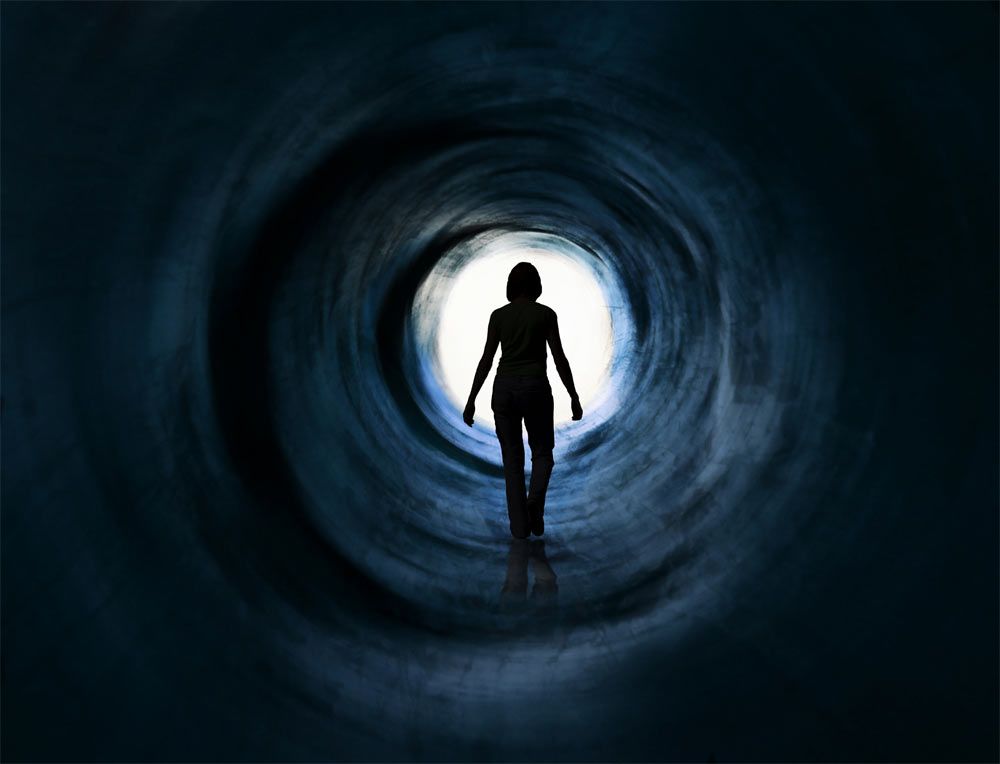Out-of-Body Hallucinations Linked to Brain Glitch

Out-of-body hallucinations can be freaky, and are often associated with mental or physical illness. New research has linked these experiences to instabilities in a part of the brain called the temporal lobe, and to errors in the body's sense of itself — even in healthy individuals.
"Seems to be that all of us can be placed somewhere along a sliding scale, based on how unstable or erratic our temporal lobe is, and some people are more prone to these experiences," said study researcher Jason Braithwaite of the University of Birmingham.
The temporal lobe interprets the sensory and other information coming in from the body and places it on a body map, giving us our sense of being inside our body, of looking out from our eyes. If this interpretation goes wrong, a hallucination can occur in which a person sees themselves from outside of their body, also called an out-of-body experience (OBE). [Top 10 Unexplained Phenomena]
Experiencing the body
Out-of-body experiences are traditionally thought of as occurring during a near-death experience, but these aren't the only situations in which OBEs occur. They often occur during relaxed and wakeful states, or during migraines or temporal lobe seizures. About 10 percent of people in the general population have experienced an OBE. In college undergraduates, this number is double (researchers don't know why), usually falling somewhere between 20 and 25 percent.
In the researchers' sample of 63 undergraduates, 17 individuals (26 percent) reported having experienced an OBE. The volunteers filled out a questionnaire to assess their mental state. Those who had reported having an OBE showed differences on only two parts of the questionnaire: those that indicate instabilities in the brain's temporal lobe and errors in the body's sense of itself.
To measure a participant's temporal lobe stability, the surveys included questions such as: "Do you ever sense the presence of another being, despite being unable to see any evidence?” An example question from the body-distortion measures: "Do you ever have the sensation that your body, or part of it, is changing or has changed shape?"
Sign up for the Live Science daily newsletter now
Get the world’s most fascinating discoveries delivered straight to your inbox.
Participants also completed a computer-based task where they were asked to imagine being in the place of a figure on the screen and to identify parts of the body (like "Which hand is the figure's glove on?"). People who had experienced OBEs were slower in their responses and more prone to make errors.
Distorted data
The distortion in our sense of bodily self could be caused by either conflicting information coming in from the body, or from disruptions of communication in the temporal lobe, which processes this information into a body map, Braithwaite told LiveScience.
"Your sense of self, of where you are in space, is not automatic, your brain needs to work it out all the time," Braithwaite said. "It's constantly sampling that information and constantly making that interpretation of where you are in space, and sometimes that interpretation goes wrong."
When this interpretation goes wrong, it could be the cause of an out-of-body experience.
The study was published in the July 2011 issue of the journal Cortex.
You can follow LiveScience staff writer Jennifer Welsh on Twitter @microbelover. Follow LiveScience for the latest in science news and discoveries on Twitter @livescience and on Facebook.
Jennifer Welsh is a Connecticut-based science writer and editor and a regular contributor to Live Science. She also has several years of bench work in cancer research and anti-viral drug discovery under her belt. She has previously written for Science News, VerywellHealth, The Scientist, Discover Magazine, WIRED Science, and Business Insider.












